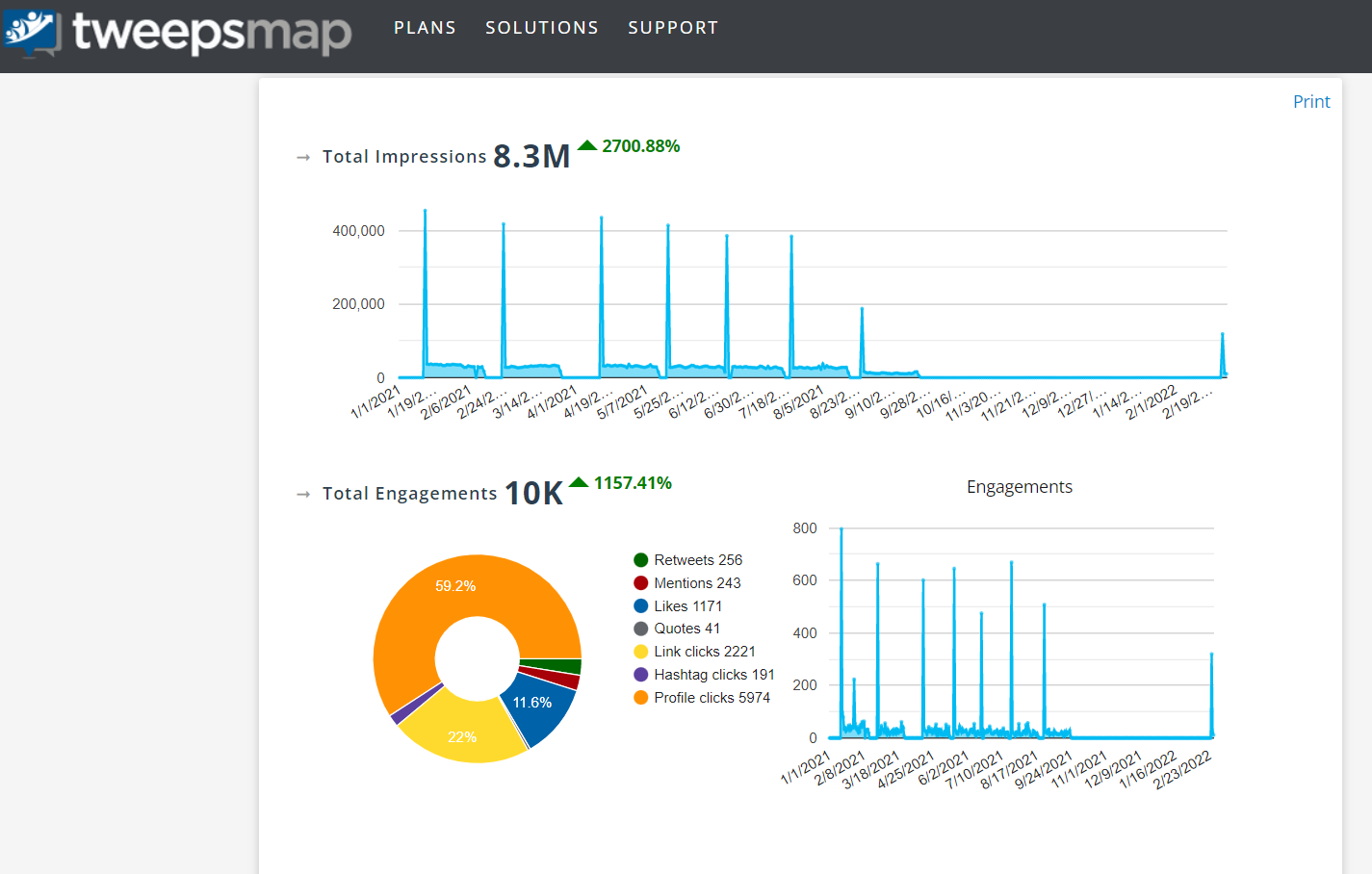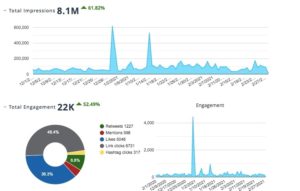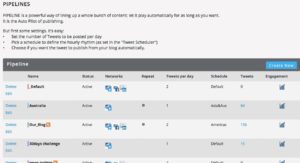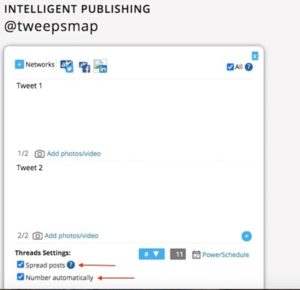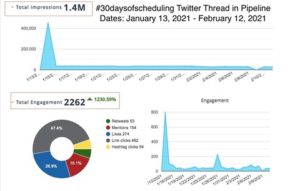Introduction
X (formerly Twitter) threads are often used to express more than just the 280-character limit. However, they are often left unnoticed on the advantage which they provide for boosting engagement and increasing traffic!
To stay on top of our publishing game, we utilize Fedica to schedule posts to be posted daily at the most optimal times for our audiences. However, we wanted to create an experiment to explore if we can generate even higher twitter engagement levels than ever before!
To do so, we utilized a thread in our experiment to test engagement levels of posting normally versus posting in a thread. We proceeded with a suitable topic for our audiences’ interests, #30daysofschdueling, with the objective to further our engagement levels by providing daily useful tips that would help user’s social media usage and scheduling. We spread the publishing of this thread over a span of 30 days starting on January 13th, 2021 until February 12th, 2021.
We used a mixture of methods to reach our audiences and drastically increase our engagement numbers, and more importantly, we let the Fedica scheduler automate the entire process of scheduling the twitter thread and pick the optimal times for each post.
The results of our experiment far exceeded our expectations! Read below to find out how we achieved such standout numbers.
Baseline
We will begin by viewing a pipeline that was posted during the same timeline as our experiment. Both pipelines post similar content that is original to Fedica. We will compare “Our Blog” pipeline and our #30daysofschdueling pipeline to see the difference of engagement when you do not utilize a thread versus when you do.
“Our blog” pipeline uses similar times to the #30daysofschdueling pipeline by posting at our Twitter audiences peak active times. It posts active blog posts from the Fedica blog. The total engagement of this pipeline over the 30-day mark was 1772 where 61 posts were posted during that period. That makes for an average of about 29 engagements per post. Additionally, this pipeline sits at 1.1 million impressions which makes for an average of about 18,080 impressions per post.
On average, Fedica’s general posts receives about 17,173 impressions.
There were various concepts used in our experiment to gain the high-performance rates of our posts starting with a curated topic that was suitable for our audience (30 days of scheduling). We then created a hashtag that was inserted into each individual post to categorize our content and increase the chances to be noticed in conversation #30daysofscheduling. There was always a link or graphic inserted to intrigue users.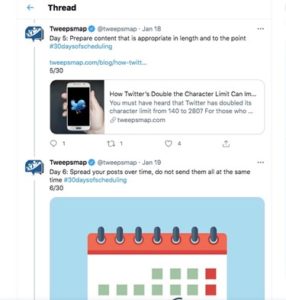
Another huge factor was Utilizing the pipeline function on Fedica which automatically posted a post a day into the thread at our audiences most active times.
As well, using the advanced automatic thread numbering function to organize the posts. And lastly, spreading thread over a period of thirty days for maximum visibility.
Performance Measurement
In the overall performance, the “30 days of scheduling” thread received high engagement and impression levels with only posting 30 posts in the span of 30 days, in comparison to our average posts. The experiment received 1.4 million impressions in total over the 30-day mark which makes for an average of about 46,897 impressions per post. The first post in the thread received 455k impressions at the end of the 30 days. Without including the first post, the average impression rate for a post was about 31,730.
The first post generated stand out results, it had about 10X higher impressions than the average post in the thread and about 26X more than our normal posts not in the thread. However, other posts in the thread also received higher engagement levels as well; excluding the first post, on average, each post in the thread had 85% more impressions than what our average posts receive in a non-thread.
Compared with our baseline of posts published at optimal times, our experiment achieved 159% higher of impression per post. Additionally, the first post in the thread received 2417% more impressions than the baseline. Without including the first post of the thread, the average impression rate for a post in the thread was about 75% higher than baseline.
In comparison to the baseline engagement, the #30daysofscheduling pipeline received 2262 engagements over the 30-day mark. This makes for an average of 75.4 engagements per post which is an increase of about 160% when compared to the baseline.
Additional Results
Day 15 of #30daysofscheduling was the halfway mark of the 30-day thread. It continued with increased impressions than average post, where it is sitting at 36k views. There was also an increase of link clicks.
Standout Results and Tips
This experiment opened a clear vision of how to efficiently gain Twitter engagement with the use of a thread with some tips to keep in mind.
As seen by the results, the posts that had a link included in them had higher engagements than posts with just a graphic. So, when trying to reach high traffic levels on your additional platforms, opt to linking a relevant website as opposed to a graphic.
It is critical to note that with the high engagement levels on our “day 1” post, there was no traffic converted to the website. Therefore, we recommend that the first post of the thread contains a link to convert traffic to platforms such as the website or blog in our specific case. However, we were able to drive traffic to the Fedica profile where this is clearly displayed in the first post through which 612 users visited our profile.
In comparison to normal posts, posts that are in a thread seem to track over twice as high impressions. It is no doubt that the use of a Twitter thread in our experiment displayed a standout performance, increasing our engagement 160% than our average posts.
Conclusion
In conclusion, when measuring the engagement and impression levels on posts, it can be determined that using a thread as an alternative way to post is a much more effective strategy to reach audiences. Posting content when your audience is online is a common strategy utilized to increase user’s impression and engagement levels. This approach can be optimized further by using threads which can have a drastic increase on your activity numbers. Spreading thread posts at peak active times allowed us to achieve 2417% increase of impressions and a 160% increase in engagements.
This experiment has opened the door for a new way of social media marketing that will help in increasing twitter engagement and impressions like ever before!
To achieve similar stand out results, check out the publishing platform, https://fedica.com/, to help you increase your publishing and performance levels today!

